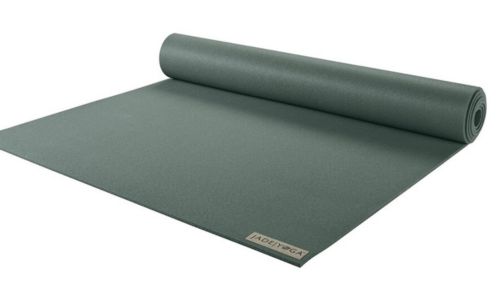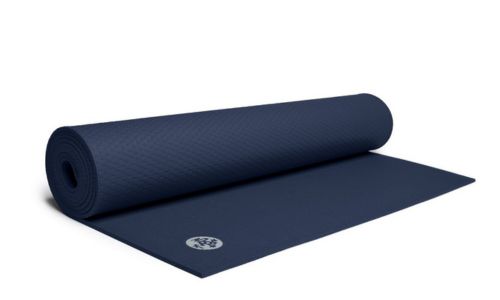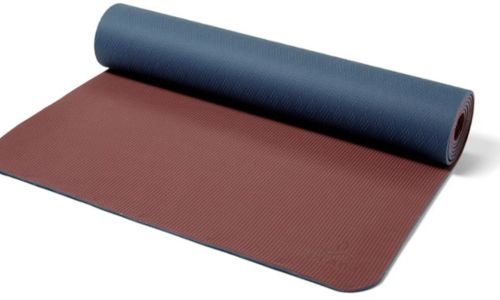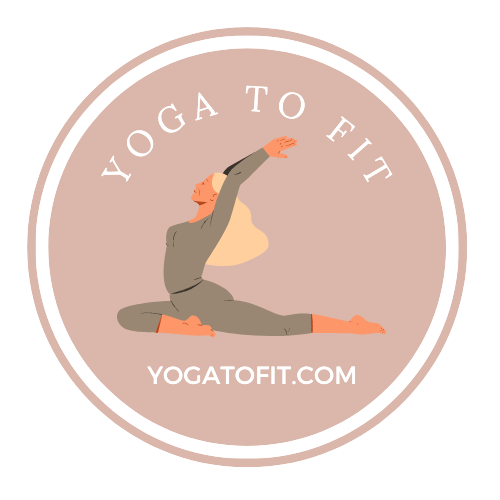The Best Non-Toxic Yoga Mats

A yoga mat is an essential tool for any yogi, as it provides stability, comfort, and support during yoga practice . Having a good yoga mat that provides grip and support is essential whether you practice at home or at a nearby studio.
The manufacturers often use materials containing harmful chemicals like PVC and other toxins to make traditional yoga mats. Fortunately, non-toxic yoga mats are now widely available, making it easier to practice yoga safely and sustainably.
These toxic materials can harm our health and the environment. These can cause a variety of health problems such as skin irritation, respiratory issues, and hormonal imbalances.
So, it is better to use eco-friendly yoga mat. In this article we will have sort out some of the best eco-friendly yoga mat available in the market.
Let’s take a look at the best of the best non-toxic yoga mats.
Understanding Non-Toxic Yoga Mats

Before delving into the top picks for non-toxic yoga mats, it’s crucial to understand what makes a yoga mat non-toxic. In recent years, awareness about toxic chemicals in everyday products has grown, and yoga mats are no exception.
Non-toxic yoga mats are designed to be free from harmful substances such as PVC (polyvinyl chloride), latex, and synthetic rubber. They are also often produced using eco-friendly processes, minimizing their environmental impact.
Non-toxic yoga mats prioritize your health by eliminating exposure to chemicals that can be harmful when absorbed through your skin or inhaled during practice. They contribute to a more mindful and holistic yoga experience, aligning with the principles of yoga itself.
How to Choose the Right Non-Toxic Yoga Mat
Selecting the right non-toxic yoga mat can greatly enhance your yoga practice. Here are some essential factors to consider:
Material Matters
Choose a mat made from natural, non-toxic materials such as natural rubber, cork, or TPE. Avoid mats with PVC, latex, or synthetic rubber, as they may contain harmful chemicals.
Thickness and Comfort
The thickness of your mat affects comfort and support. Thicker mats provide better cushioning for sensitive joints, while thinner mats offer a more stable base for balance poses.
Durability
Invest in a mat that can withstand the test of time. Look for mats with closed-cell construction that resists moisture and prevents the growth of bacteria and fungi.
Eco-Friendliness
Consider the environmental impact of your mat. Opt for mats made from sustainable materials and produced using eco-friendly processes.
By carefully evaluating these factors, you can find a non-toxic yoga mat that complements your practice and promotes your well-being.
Top 5 Non-Toxic Yoga Mats in 2023
Here are the best non-toxic yoga mats that align with your practice and values:
1. Jade Harmony Professional Yoga Mat

The Jade Harmony Professional Yoga Mat is made from natural rubber and is free of PVC and other harmful chemicals. It provides excellent grip and cushioning, making it a popular choice among yogis.
The mat is also eco-friendly, as Jade plants a tree for every mat sold, which helps to reduce the amount of carbon dioxide in the air.
Some drawbacks are:
- Slippage: Some users have reported that the mat can be slippery, especially during hot yoga sessions or when sweating heavily.
- Smell: The mat may have a strong smell when first purchased, which can take some time to dissipate.
- Maintenance: The mat requires regular cleaning and maintenance to keep it in good condition, which may be inconvenient for some users.
2. Manduka ProLite Yoga Mat

The Manduka ProLite Yoga Mat is made from a non-toxic PVC-free material called TPE. It is also latex-free and does not contain any toxic chemicals.
The mat is lightweight and provides excellent cushioning, making it a great option for both beginners and advanced yogis. It is also easy to clean and has a lifetime guarantee.
Some drawbacks are:
- Not suitable for hot yoga: The ProLite mat is not recommended for hot yoga as it does not offer the same level of grip as mats specifically designed for hot yoga practice.
- Price: The Manduka ProLite Yoga Mat is more expensive than many other yoga mats on the market, which may not be suitable for those on a tight budget.
- Weight: The ProLite mat is relatively heavy compared to other mats, making it less portable and potentially inconvenient for those who frequently practice yoga on-the-go.
3. Liforme Yoga Mat

The Liforme Yoga Mat manufacturer makes the mat from natural rubber and ensures that it is free from PVC and other harmful chemicals. It has a unique alignment system that helps you to find the correct position for your hands and feet during yoga practice.
The mat is also eco-friendly, as it is biodegradable and recyclable. It provides excellent grip and cushioning, making it a popular choice among yogis.
Some drawbacks are:
- Durability: Some users have reported that the mat shows signs of wear and tear more quickly than other mats, particularly in areas where the hands and feet are placed.
- Slipperiness: While the mat is designed to provide good traction, some users have reported that it can be slippery when wet or when the user’s hands or feet are particularly sweaty.
4. Prana ECO Yoga Mat

The Prana ECO Yoga Mat constructs with non-toxic TPE and doesn’t contain harmful substances like PVC, making it a sustainable choice for yogis.
Not only is it biodegradable and recyclable, but it also boasts superior cushioning and grip, catering to practitioners of all levels. Additionally, the mat’s lightweight design and effortless maintenance make it a convenient option.
Some drawbacks are:
- Price: The Prana ECO Yoga Mat is more expensive than some other eco-friendly yoga mats on the market. This may be a concern for users who are looking for a more affordable option.
- Thinness: Some users have found the mat to be too thin, which can make it uncomfortable for certain yoga poses, particularly those that involve pressure on the knees or elbows.
5. Hugger Mugger Earth Elements Yoga Mat

The Prana ECO Yoga Mat, crafted from natural rubber, is a safe and sustainable alternative to traditional PVC mats. This biodegradable and recyclable mat is a mindful choice for eco-conscious individuals.
The mat offers exceptional cushioning and traction, which makes it a popular choice among yoga enthusiasts of all levels. Additionally, it is lightweight and straightforward to maintain.
Some drawbacks are:
- Limited color options: The mat is only available in a few color options, which may not be ideal for people who prefer a wider range of colors to choose from.
- Smell: Some users have reported a strong rubbery smell from the mat, which may be a problem for people who are sensitive to smells.
FAQ’S
Q: What are non-toxic yoga mats?
A: Yoga mat manufacturers make non-toxic yoga mats with materials that do not contain harmful chemicals and toxins, which can be detrimental to your health and the environment.
Q: Why should I use a non-toxic yoga mat?
A: Using a non-toxic yoga mat can help reduce your exposure to harmful chemicals and toxins that can negatively impact your health. Moreover, manufacturers make non-toxic mats with sustainable and eco-friendly materials, making them better for the environment.
Q: What materials are used to make non-toxic yoga mats?
A: Materials commonly used to make non-toxic yoga mats include natural rubber, cork, jute, organic cotton, and other sustainable materials. These materials are free from harmful chemicals and toxins commonly found in traditional PVC and foam yoga mats.
Q: What are some of the best non-toxic yoga mats available?
A: There are many non-toxic yoga mats available on the market today. Some of the best options include the Manduka eKO Lite Yoga Mat, the Jade Harmony Professional Yoga Mat, the Liforme Yoga Mat, and the Yoloha Nomad Cork Yoga Mat.
Conclusion
In conclusion, non-toxic yoga mats are an essential part of any yogi’s practice. With concerns about the potential health risks associated with traditional mats, it’s important to consider the materials used in the production of a mat before making a purchase.
Natural, sustainable materials like rubber, cork, and organic cotton make the best non-toxic yoga mats that offer a safe and comfortable surface for your practice.
By choosing a non-toxic mat, you can rest assured that you’re not exposing yourself to harmful chemicals and that you’re making a more eco-friendly choice for both yourself and the planet.
Ultimately, investing in a high-quality non-toxic yoga mat is a worthwhile investment in your health and wellbeing.
Namaste!



